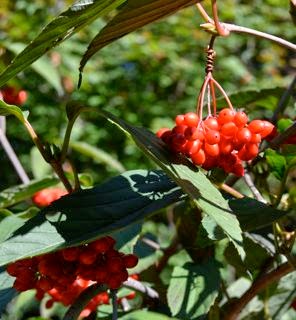Leaves have fallen but seeds persist amongst white fluff, dark brown cones or beaded along erect and bended stem. The birds have pecked some clean leaving gray skeletons and little straw-like stars. The color palette ranges from white through pink to beige. Beneath is a carpet of brown oak leaves through which robins and white-throated sparrows scratch and peck for grubs and spilled seed. Nature, left to its own devices, creates this muted beauty in a winter’s garden. A garden left alone to complete a life’s cycle. No power tools are necessary.
Rake versus Blower
The wind rustles the trees and birds twitter from bare branches.
Rake scrapes in a steady rhythm and pushes golden leaves into a rough and tumble pile.
Blower makes its own wind.
A deafening roar that coerces nature’s bounty to be tidied up and put out of the way.
Using rake is wholesome exercise.
Blower makes it all a chore.
The fuel for rake is from burning calories.
A human body is warmed in the cool crisp air, which has the sweet smell of fall.
Blower burns fossil fuel.
A motor becomes hot and releases toxic fumes.
Rake caresses red leaf of maple, orange mitt of sassafras and leathery brown of oak.
Blower makes all a blur and a whir.
Neighbors stop for a chat when rake is in operation.
Doors, windows, blinds, and ears, are closed and covered when blower blows.
Rake makes free mulch that feeds the soil.
Blower leaves behind a blasted bare earth and long rows of leaf bags.
Robins and sparrows scratch and peck for food once rake is put away.
A naked soil must bear winter’s wrath after blower has done its job.
Rake has the last word.


























